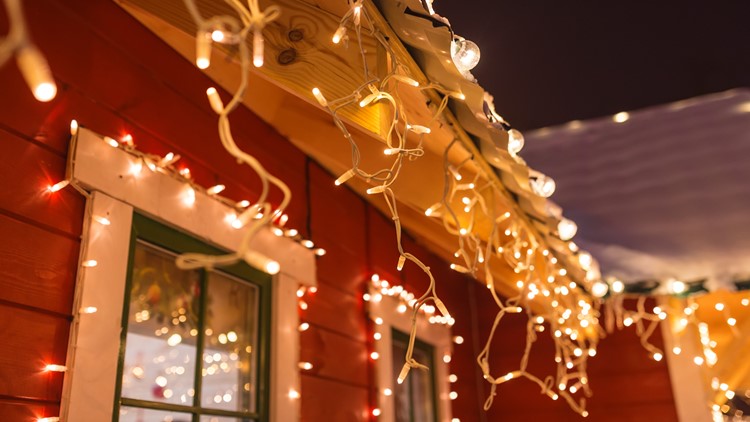DENVER — The end of the year marks the start of many different holidays, and people are gearing up to celebrate! Between candles, string lights and trees, festive decorations are everywhere.
But, in the midst of celebration, we rarely stop to wonder: can certain decorations pose a risk to our safety?
When it comes to fire, the answer is yes, according to Capt. JD Chism with the Denver Fire Department.
"Well, when you're adding more decorations, you're adding more fire load, you're adding more draw to your normal system," Chism said. "So absolutely, there is a likelihood of some sort of occurrence."
Chism said, that instead of going overboard on decorations, it's important to have a safety plan first— starting with making sure smoke detectors work before the holiday season gets busy.
"If we were to have one of those accidents, smoke detectors can save lives," he said.
What's next on the safety plan? Chism shared the following things to keep in mind.
Moderation is key when it comes to electricity
For some people, the holiday season is the perfect time to let their decorating skills shine— literally. Festive lights can be seen all throughout Colorado neighborhoods, and some houses go all-out.
But between regular home appliances and holiday décor, we can lose track of just how many things are plugged into our power outlets and extension cords. Large amounts of electrical loads can lead to a small fire, Chism said.
But he said the risk of a more serious fire increases when there are objects near the outlets that are being overdrawn, rugs covering long extension cords, Christmas trees or other festive items.
"What ends up happening is when we overdraw, then we have the fires that start small," Chism said. "And then, because we have so much fire load in our house from those decorations, that spreads quicker, and that's when we can have a catastrophic event."
Moral of the story? Make sure your outlets aren't overcrowded and follow manufacturers' recommendations on how many cords can be plugged in together, Chism said.
Keep trees— and all other decorations— away from heat
Placing objects on or near heat for extended periods of time can be a recipe for disaster. This might sound obvious, but it can be easily overlooked when thinking of where to place our decorations.
Fireplaces aren't the only thing to be mindful of when preventing objects from burning: many homes have multiple heat sources during the winter, such as space heaters and furnaces.
"The recommendation is that we want to make sure that we're not putting our Christmas tree or any of our decorations within three feet of any of those heat sources," Chism said.
For those who have Christmas trees, Chism said making sure to water them on a regular basis keeps them from drying out and less susceptible to catching fire.
Mind the lights, candles or otherwise
Candles are another popular addition to our homes during the holiday season— but they're also a common fire starter, Chism said.
"One of the most common causes of house fire or residential fire that we're seeing is based on people having candles that catch those holiday decorations," he said.
String lights are also something to be mindful of. Chism said the risks come when they're left on for long periods of time because that's when they can overheat.
Additionally, Chism said some types of string lights might be safer than others.
"I would recommend LED lights over the older incandescent lights because those LED lights definitely draw less and they create less heat when they're plugged in," he said.
Again, reading manufacturer indications about how many strands of lights can be plugged in together is also important when ensuring the safety of your home.
SUGGESTED VIDEOS: Colorado Guide



